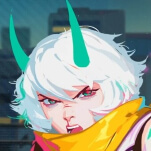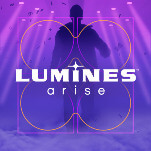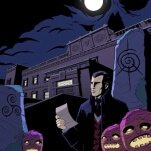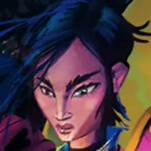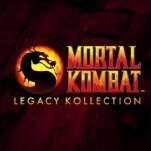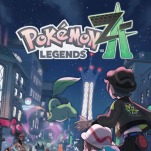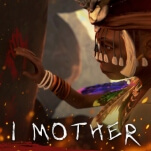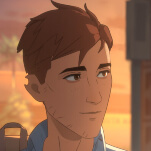Guitar Hero Live: I Had Forgotten What It’s Like to Want My MTV
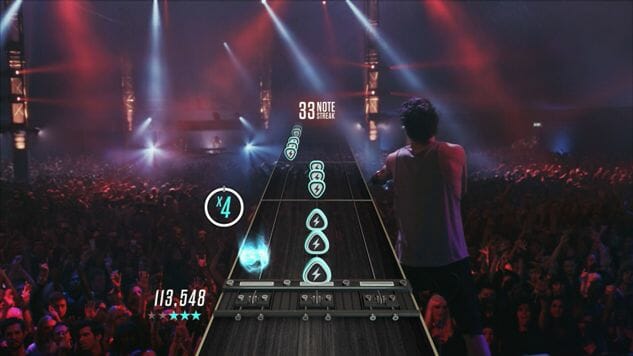
I get nervous when I get on a stage in real life, and the biggest crowd I’ve ever been in front of was probably a few hundred people. So when my character in the intro to Guitar Hero Live gets nervous, hands twitching, before going on stage to play a headlining gig at the Sounddial Festival, I can totally understand why. There’s a sea of people outside chanting my band’s name, and if I screw up, they will let me know.
Guitar Hero Live tries harder to make you feel like a rock star than any music game that’s come before it. Instead of looking at your computerized avatar from the audience, the game is in first-person, with throngs of fans surging in front of you. It’s in full motion video, shot on a soundstage in England, with real people playing those fans and your band mates. They all react to everything you do, both when you’re hitting every note and when you’re plinking and skronking like somebody who’s just picked up a guitar for the first time. And it’s only guitar this time, along with vocals if you want to plug in a USB mic—the bass and drums of the last few games are gone.
There’s a lot of power in the way this game looks. The vistas designed for the game’s two music festivals are gorgeous, with city skylines and massive bridges in the background, a castle and Ferris wheel towering over an idyllic British countryside filled with hundreds of thousands of fans. The first time I played every stage I was amazed by the detailed display before me.
There’s also a new and slightly more realistic approach to the guitar. Instead of four or five colored buttons in a row, the reconfigured guitar controller has two rows on top of each other with three buttons each. On the higher difficulty levels you’ll play two-note chords in-between runs and solos. Sometimes it feels like you’re playing in Drop D—you’ll constantly be using a single finger to hold down two buttons at once. The game tells you if a note is on the upper string by using a black icon, and the lower string is represented with a white icon. You’ll have to fluently switch between the two while keeping up with the pace of the song. It’s still, after a dozen hours or so of play, really hard for me to move quickly between chords made up of black and white notes, and if I’m feeling tired I’ll even have a hard time switching between the two on single notes. It’s an immediate challenge that’s unlike anything seen before in this type of game. And although it feels a little bit more like playing guitar than the old games in some ways, namely the fingering of chords, it’s still almost nothing like playing real guitar.
Despite the cool new guitar, maybe the most impressive thing about Guitar Hero Live is how the designers took a game that was basically a rock and roll cartoon, replaced the computer graphics and animated characters with real video of real people on a real stage, and somehow made it still feel like a big cartoon. That is commitment.
As I wrote after the Guitar Hero Live launch event back in April, the old Guitar Hero made me uncomfortable. It was fun to play, but the aesthetics were off—it was selling a goofy rock stereotype that has always made me embarrassed to like rock music.
The brand new Guitar Hero Live tries to get away from that by discarding the old Hero characters and creating ten fictional bands made up of real live musicians, but that spirit is unshakable. These are market tested, professionally styled bands, geared directly towards specific demographics. And that’s fine. In real life, those are the types of bands that play to massive festival crowds and make it on magazine covers. That is the rock and roll dream, really: most people don’t have fantasies about playing in front of 30 people at their local indie rock dive.
The weirdest thing about these bands is that they can’t stop looking at each other. They specifically stare directly into the guitarist’s eyes at almost all times. As you’re playing through these concerts, you’ll constantly make eye contact with the bassist or singer, who are apparently more interested in supporting (or insulting) you than actually connecting with the crowd. The crowd’s okay with it, because they’re all uniformly staring right at you, too. You’re basically the only person who matters on that stage, even if there are always four (or more) other musicians up there alongside you. Some eye contact is understandable, but it’s hilariously overdone here in hopes of making you feel like the star.
All those people on screen react to what you’re doing. If you’re playing the song well, they’re happy and sing along. If you’re missing notes left and right, they get visibly angry and might start throwing stuff at you. The video fades between the two as your performance dips or improves; it’s not smooth, with a slight blur effect signaling the switch, and it’s a little funny how quickly these people can go from literally the most excited people ever to wanting to murder you, but again, it’s basically a real-life cartoon.
-

-

-

-

-

-

-

-

-

-

-

-

-

-

-

-

-

-

-

-

-

-

-

-

-

-

-

-

-

-

-

-

-

-

-

-

-

-

-

-




